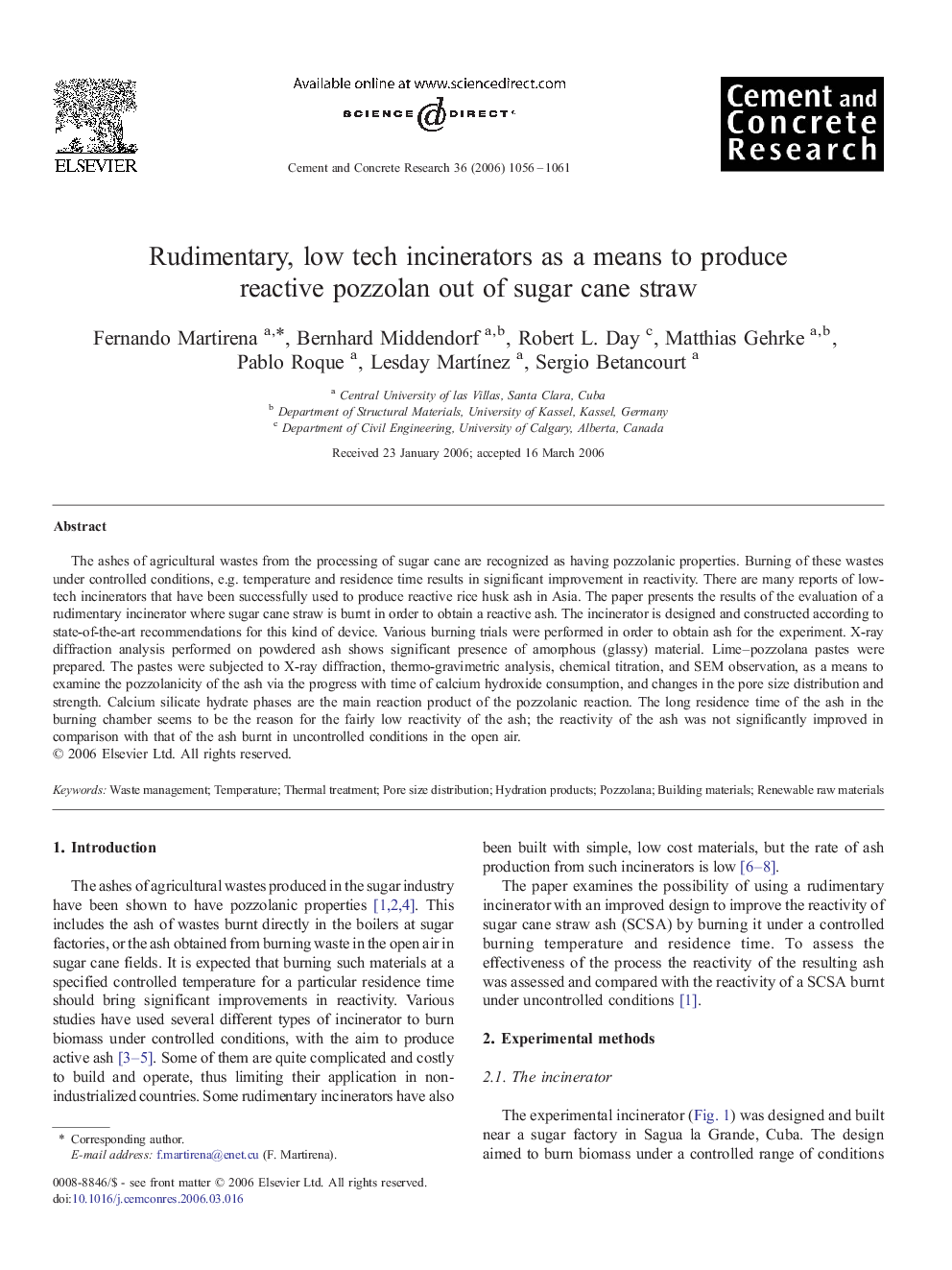| Article ID | Journal | Published Year | Pages | File Type |
|---|---|---|---|---|
| 1457727 | Cement and Concrete Research | 2006 | 6 Pages |
The ashes of agricultural wastes from the processing of sugar cane are recognized as having pozzolanic properties. Burning of these wastes under controlled conditions, e.g. temperature and residence time results in significant improvement in reactivity. There are many reports of low-tech incinerators that have been successfully used to produce reactive rice husk ash in Asia. The paper presents the results of the evaluation of a rudimentary incinerator where sugar cane straw is burnt in order to obtain a reactive ash. The incinerator is designed and constructed according to state-of-the-art recommendations for this kind of device. Various burning trials were performed in order to obtain ash for the experiment. X-ray diffraction analysis performed on powdered ash shows significant presence of amorphous (glassy) material. Lime–pozzolana pastes were prepared. The pastes were subjected to X-ray diffraction, thermo-gravimetric analysis, chemical titration, and SEM observation, as a means to examine the pozzolanicity of the ash via the progress with time of calcium hydroxide consumption, and changes in the pore size distribution and strength. Calcium silicate hydrate phases are the main reaction product of the pozzolanic reaction. The long residence time of the ash in the burning chamber seems to be the reason for the fairly low reactivity of the ash; the reactivity of the ash was not significantly improved in comparison with that of the ash burnt in uncontrolled conditions in the open air.
